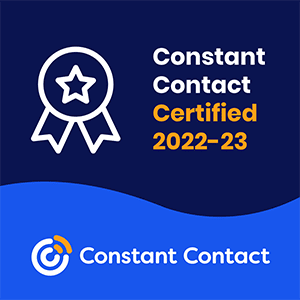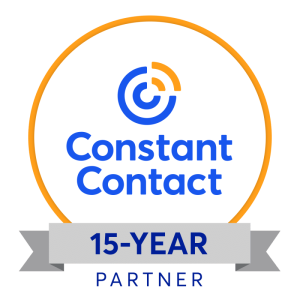If your website isn’t accessible for users with disabilities, you’re taking a significant risk. Accessibility lawsuits against websites are becoming more prevalent.
The number of lawsuits filed under the Americans with Disabilities Act (ADA) has risen significantly over the past several years. International businesses have additional legal requirements under laws like the Accessibility for Ontarians with Disabilities Act (AODA).
Of course, there’s a chance that you’ll never face litigation for operating an inaccessible website — but ignoring accessibility isn’t a great idea. By one estimate, responding to an accessibility demand letter can cost $25,000, and thousands of businesses are sued yearly for alleged ADA violations.

1. Whether you have an accurate accessibility statement
An accessibility statement provides information about the steps you’re taking to accommodate users with disabilities. It’s written in simple language and may also include your goals to meet standards such as WCAG Level AA (read more about WCAG conformance levels).
Other features of an accessibility statement include:
- Your website’s current conformance status (conformance means voluntarily following a set of guidelines such as WCAG).
- Any alternative options for accessing certain content?
- A list of known accessibility barriers.
- Contact information for submitting feedback about accessibility issues.
Publishing an accessibility statement doesn’t provide blanket protection from litigation, but it shows that your organization is committed to accessibility. That can be important if you receive a demand letter: If you support your statement with action, it establishes that you care about your users and have a long-term strategy.
Related: Do I Need an Accessibility Statement On My Website?
2. The number and types of accessibility barriers
Not all web accessibility barriers are equally disruptive to users. Some issues are minor annoyances — these are generally covered under the Level AAA standards of WCAG.
Others are more severe: Level A and Level AA success criteria are essential for usability. If your website has many serious barriers, you have a higher risk of a lawsuit.
Some examples of web accessibility barriers cited in ADA lawsuits include:
- Using color alone to convey information creates barriers for people who cannot perceive color.
- Low-contrast text may affect people with color vision deficiency (CVD) and other vision issues.
- Inaccessible web forms may impact people who use screen readers and other assistive technology.
- Missing text alternatives for non-text content, such as image alternative text (also called alt text or alt tags).
- Missing captions and transcripts may affect people with hearing disabilities.
This is not a comprehensive list. To limit your risk, you should perform regular accessibility audits and remediate any WCAG Level A/AA failures as soon as possible.
The DOJ and W3C recommend using a combination of automated audits and manual tests to evaluate web content. For more guidance, read: What’s the Difference Between Manual and Automated Accessibility Testing?
3. Your business’s physical location
In the United States, most web accessibility lawsuits are filed in New York, California, or Florida. California businesses may be especially susceptible to litigation due to the state’s Unruh Act, which allows plaintiffs to collect statutory damages.
However, you may still face a lawsuit if you operate in one of these states — even if your brick-and-mortar location is elsewhere. In other words, if you sell or promote products in California, you may be sued under the Unruh Act.
That may not apply if your business doesn’t operate a physical storefront.
The California Court of Appeals recently ruled that online-only businesses are exempt from the Unruh Act. That opinion is expected to limit accessibility lawsuits in California, but the state’s Supreme Court may reverse it.
Related: California Court: Online-Only Websites Not Covered by Title III of the ADA
3 Factors That Raise Your Web Accessibility Lawsuit Risk
The ADA requires places of public accommodation to accommodate people with disabilities reasonably. According to the Department of Justice (DOJ), websites are places of public accommodation.
While the ADA doesn’t have technical standards for accessibility, the DOJ suggests testing content against the Web Content Accessibility Guidelines (WCAG), widely used standards published by the World Wide Web Consortium (W3C). Many digital accessibility laws (including the U.S. government’s own Section 508 standards) are based on WCAG.
Below, we’ll discuss some factors that can raise your risk of a web accessibility lawsuit. We’ll also provide tips for limiting risks and reaching a wider audience by prioritizing inclusive design.
Every business has a responsibility to provide accessible web content
If your company maintains an online presence, you need an accessible website. The ADA applies to virtually every type of organization. As the DOJ notes, web accessibility barriers may impact your customers as much as missing wheelchair ramps or other physical barriers.
Here’s the good news: By following WCAG, you can limit your risks while enjoying the benefits of inclusive design. When your website works better for people with disabilities, there’s a good chance that it works better for every user. The best practices of accessibility are also closely aligned with the best practices of web design, development, and search engine optimization (SEO).
To learn more, download our free eBook, Essential Guide to ADA Compliance for Websites. If you’re ready to start building your accessibility initiative, send us a message to connect with a subject matter expert.




























Leave A Comment
You must be logged in to post a comment.